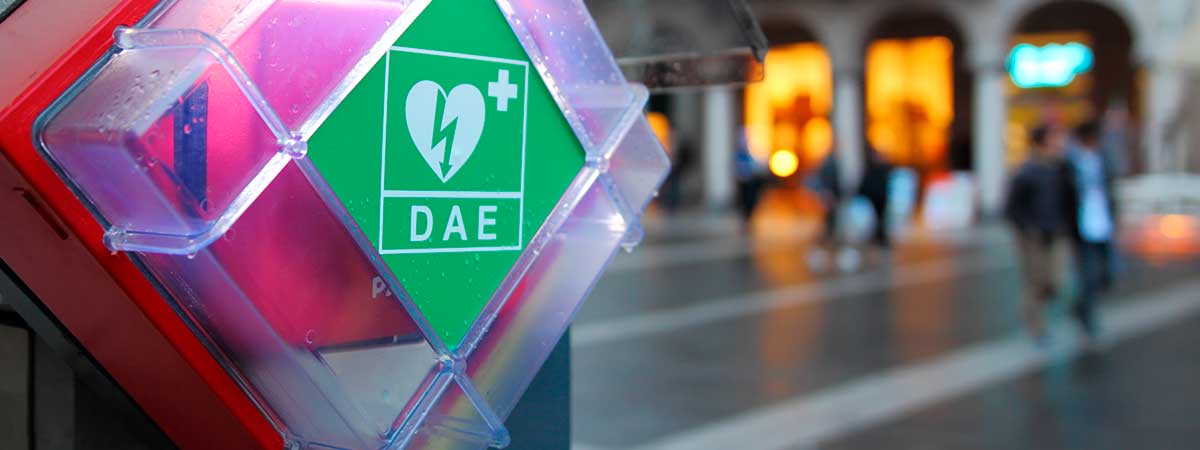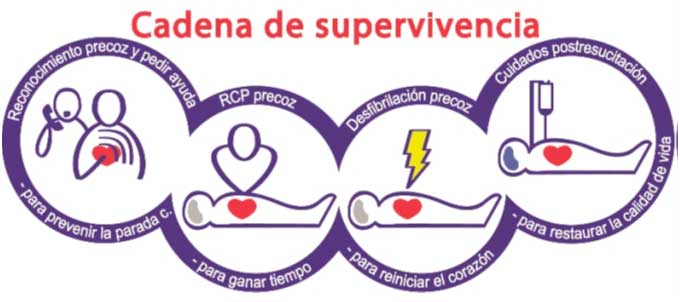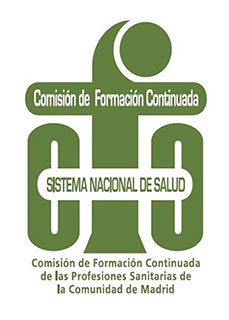Course on Basic Life Support with defibrillator (AED)

Knowing how to perform cardiopulmonary resuscitation and apply a defibrillator can save lives
It is estimated that each year there are more than 24,500 out-of-hospital cardiorespiratory arrests in Spain, one every 20 minutes on average, and they cause four times more deaths than traffic accidents. This high mortality rate can decrease if a series of actions are carried out, all of them important, that make up what is called the “Chain of Survival”.

In order to perform this immediate care, the international scientific community - International Liaison Committee on Resuscitation (ILCOR), European Resuscitation Council (ERC) and American Heart Association (AHA) - promote accredited training of both health and non-health personnel to improve the response in the care of victims of cardiorespiratory arrest.
It is not necessary to have healthcare knowledge to attend these trainings sessions.
With this course, we train both individuals who want to acquire these skills at an individual level and groups, company personnel and other organizations that, due to their characteristics, may have some risk of incidents (schools and training centers, entities with a certain influx of people or places of public interest).
Curriculum
Course on Basic Life Support with defibrillator (AED)
- 1. The early recognition of symptoms by the population (and, of course, health personnel) and the early activation of the Emergency System.
- 2. Quick and adequate start of Basic Life Support (BLS) techniques. Assess awareness, open airway, ventilate, chest compressions, and safety lateral position.
- 3. Early defibrillation.
- 4. Indications of the BLS with AED.
- 5. Guides and ethical aspects.
Professors
Basic Life Support courses are taught by accredited instructors from the IEM-Emergency Training Institute. The Institute for Medical Studies (IEM) is a center that provides specialized health training in emergencies at all levels.
It has qualified instructors with experience in emergencies, up-to-date in the IEM with the Consell Català de Ressuscitació (CCR) and the National CPR Plan of the Spanish Society of Intensive, Critical Medicine and Coronary Units (SEMICYUC) with the 2015 Life Support Recommendations of the European Resuscitation Council (ERC). Most are also regular teachers of the IEM in the Master's Degree in Comprehensive Assistance in Emergencies of the Autonomous University of Barcelona (UAB).
More Academic Info
Aimed at:
Competences
At the end of the course, the student will have acquired the knowledge and skills to:
- 1. Recognize cardiovascular risk factors and accident prevention and identify Cardiorespiratory Arrest.
- 2. Alert emergency services (112).
- 3. Perform quality cardiopulmonary resuscitation (CPR) and master the management of the instrumented airway.
- 4. Apply an Automated External Defibrillator (AED).
- 5. Face special situations: drowning, trauma, etc.
Objetivos
- Know how to act in the event of a cardiorespiratory arrest and apply an automatic defibrillator
Methodology
- Face-to-face course where the basic theoretical concepts will be taught at the beginning of the course. Basic life support and cardiopulmonary resuscitation skills are acquired by practicing the maneuvers, on a rotating basis with a reduced number of students for each accredited instructor. The skills to learn to apply AED simulators (Automatic Defibrillators) are taught in a practical way when necessary.
- The evaluation of the Course will address the following aspects:
- Compulsory face-to-face attendance to all the hours of the course.
- Students have to successfully pass the theoretical evaluations (70% correct answers are required) and all the practical evaluations.
- The course is accredited according to the guidelines of the European Resuscitation Council (ERC).
- Post-training assessment survey on satisfaction of expectations
- The evaluation includes the student following the teaching content. The student will have to take a multiple-choice exam (50 questions, 5 possibilities with only one valid answer), and will need 60% of correct answers to obtain the certificate of achievement to guarantee the assimilation of concepts and the fulfillment of the objectives. Post-training assessment survey on satisfaction of expectations.


